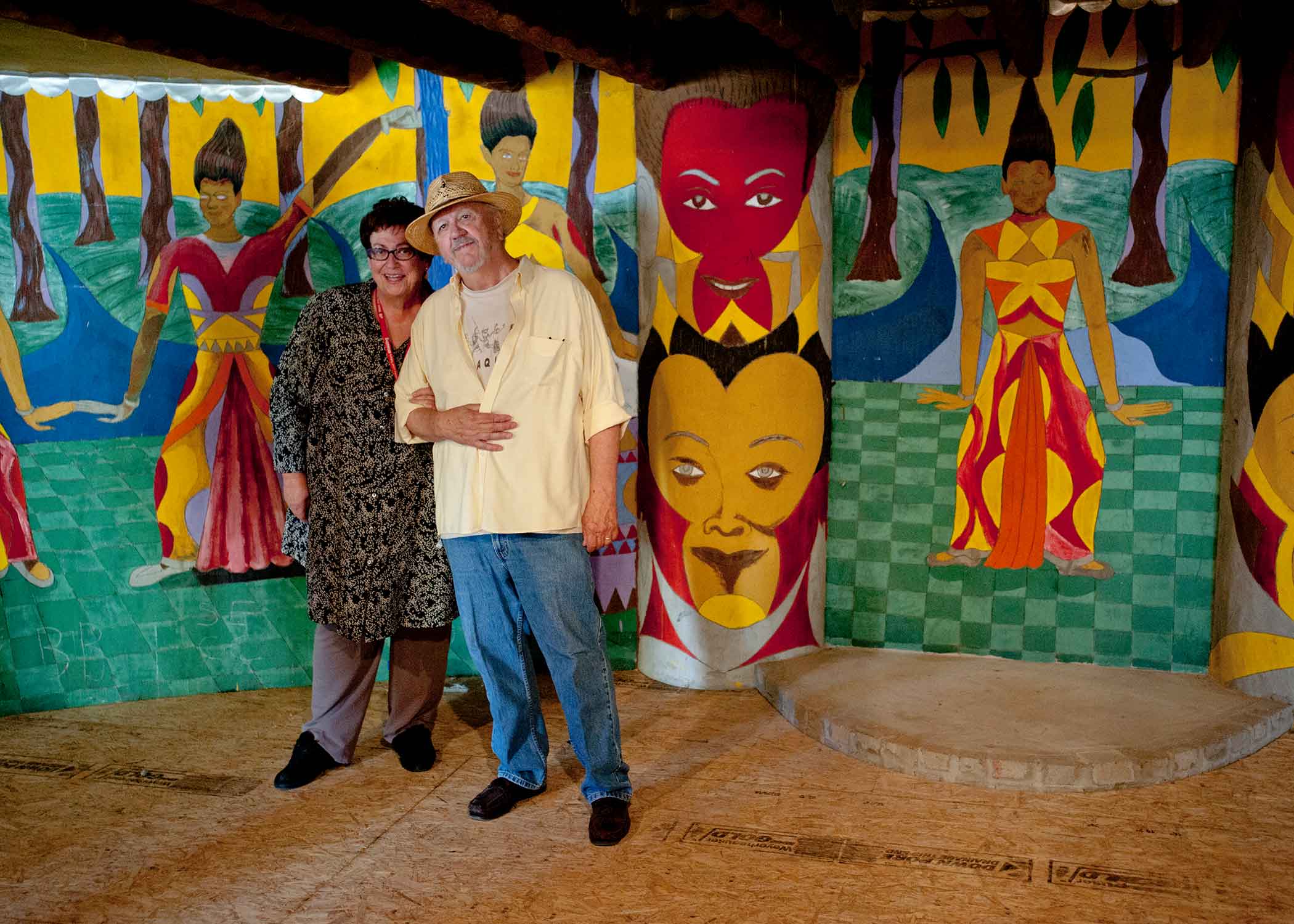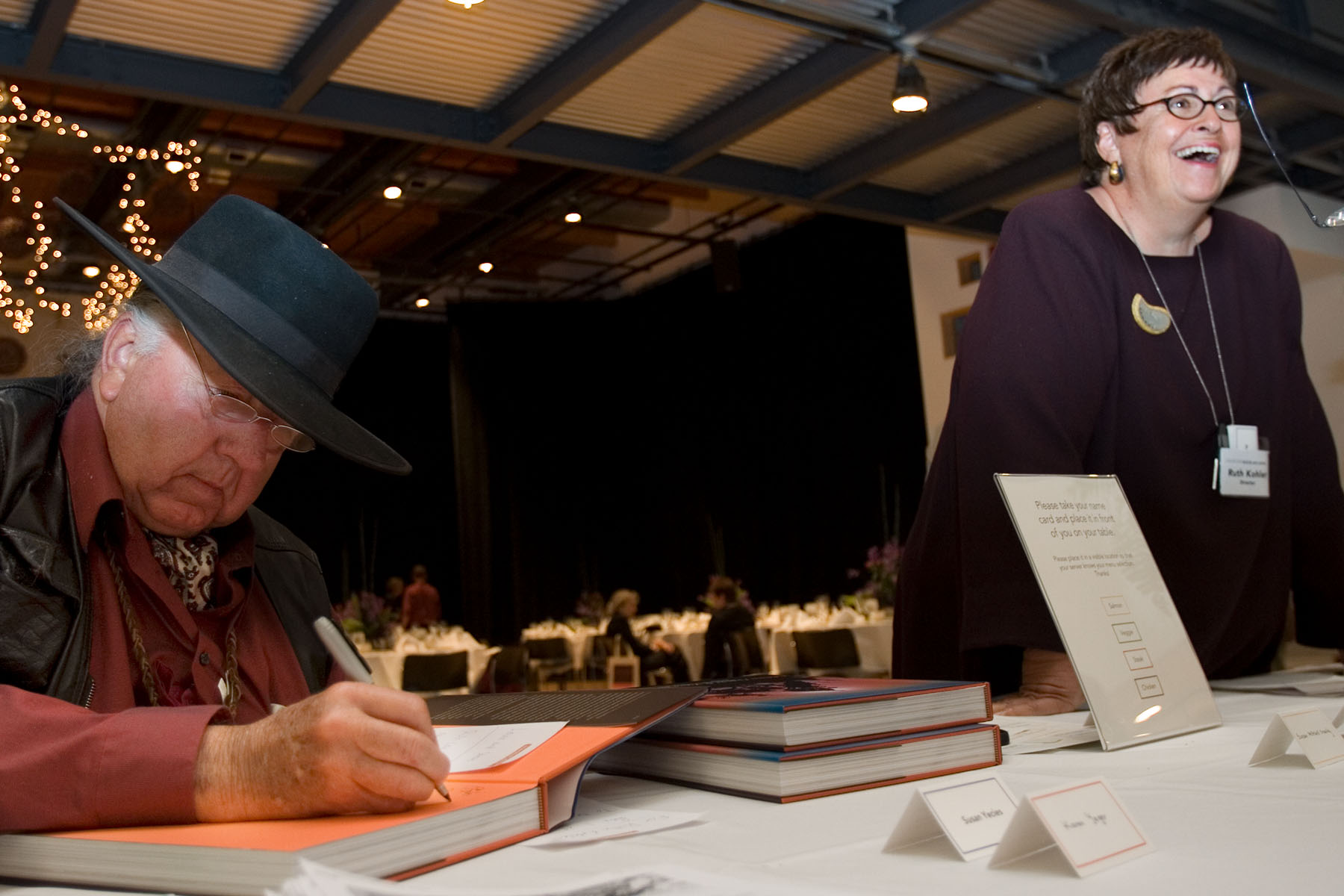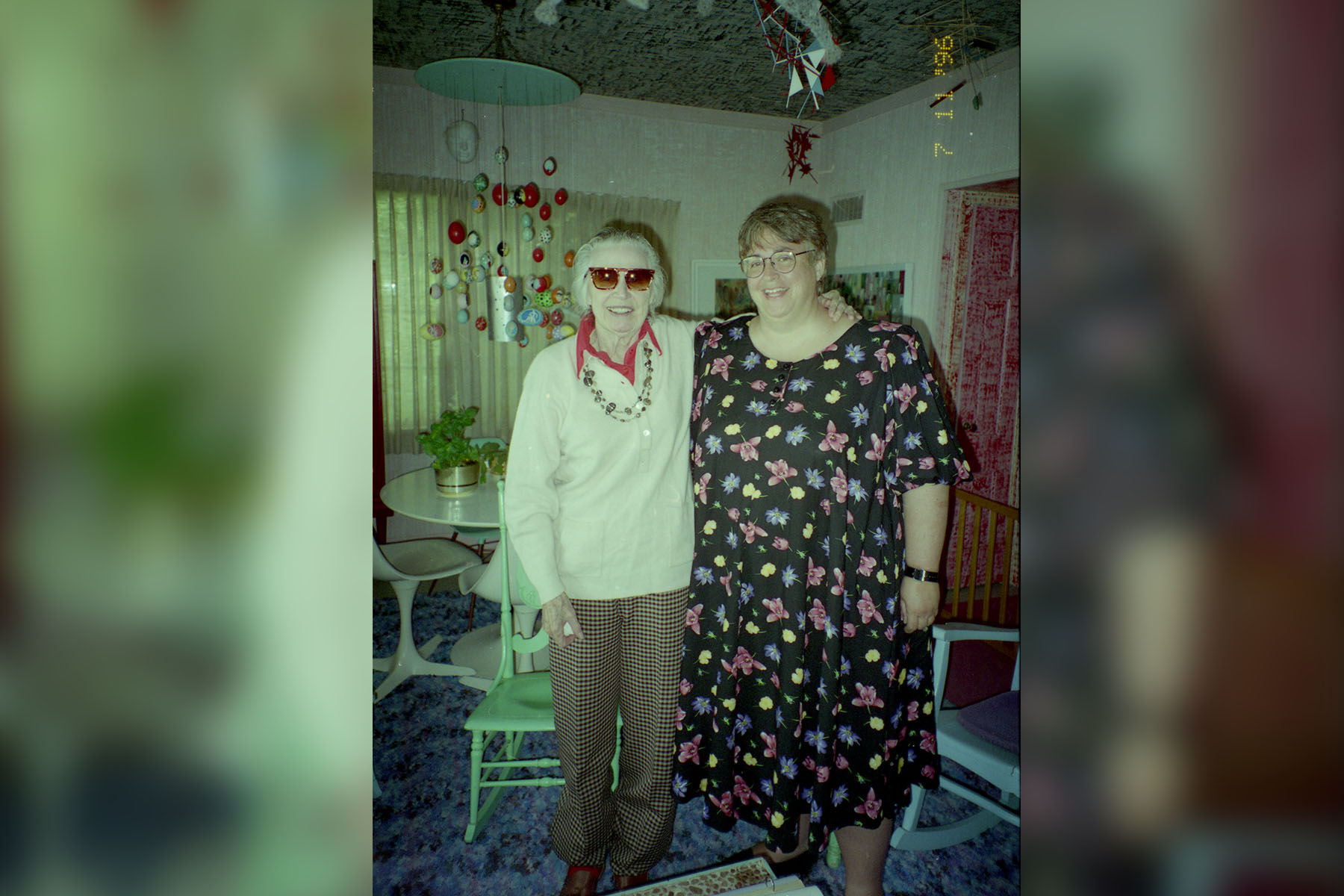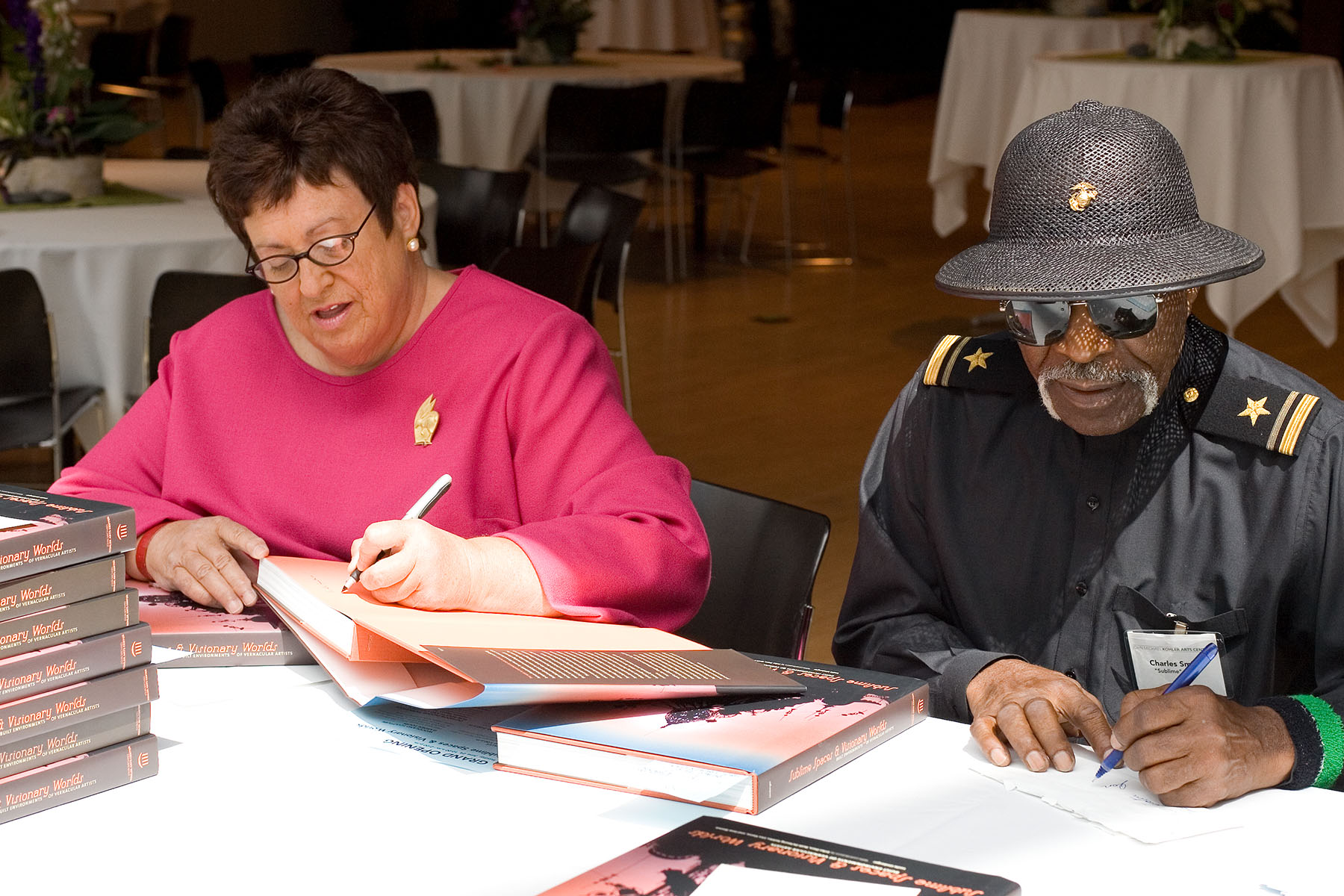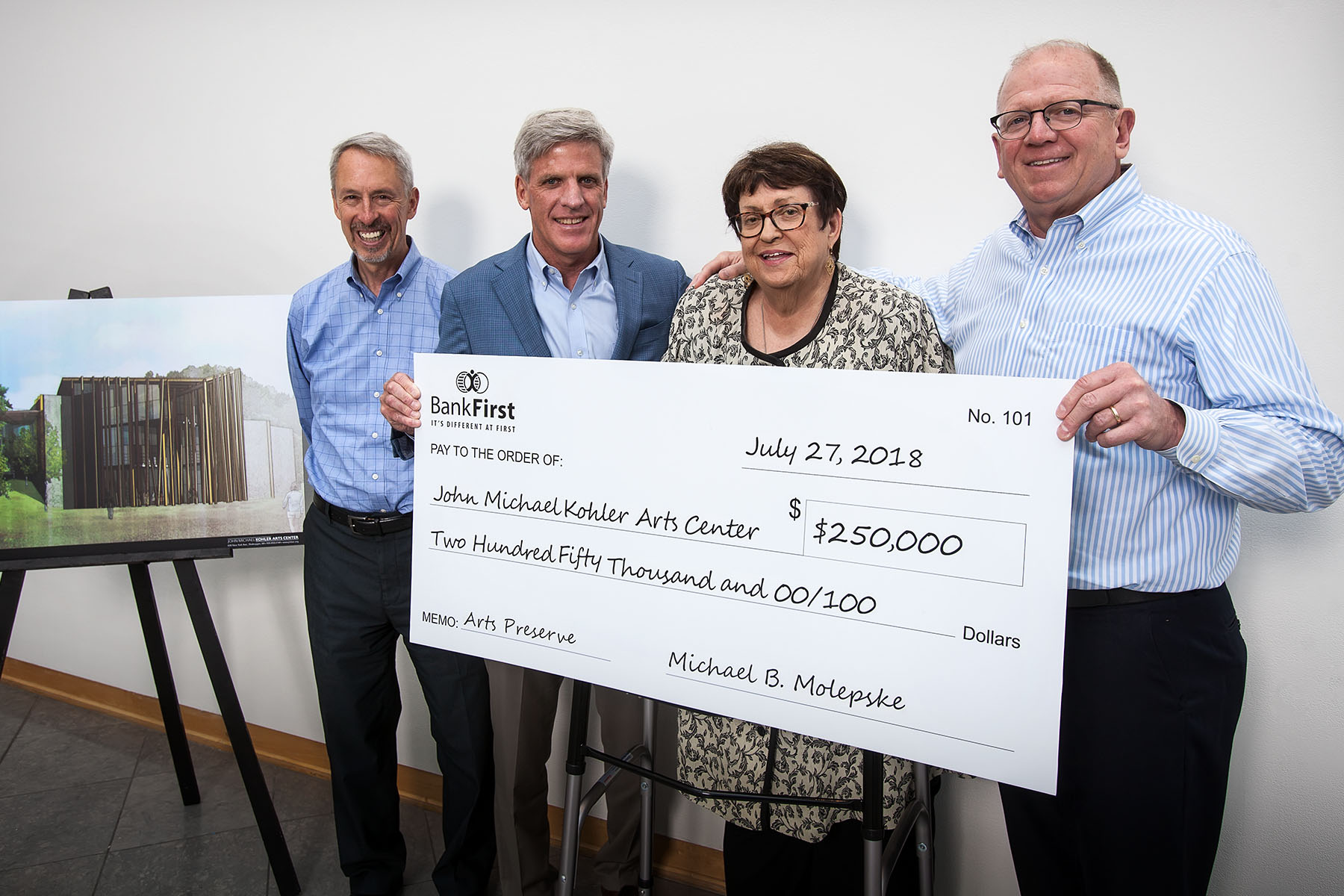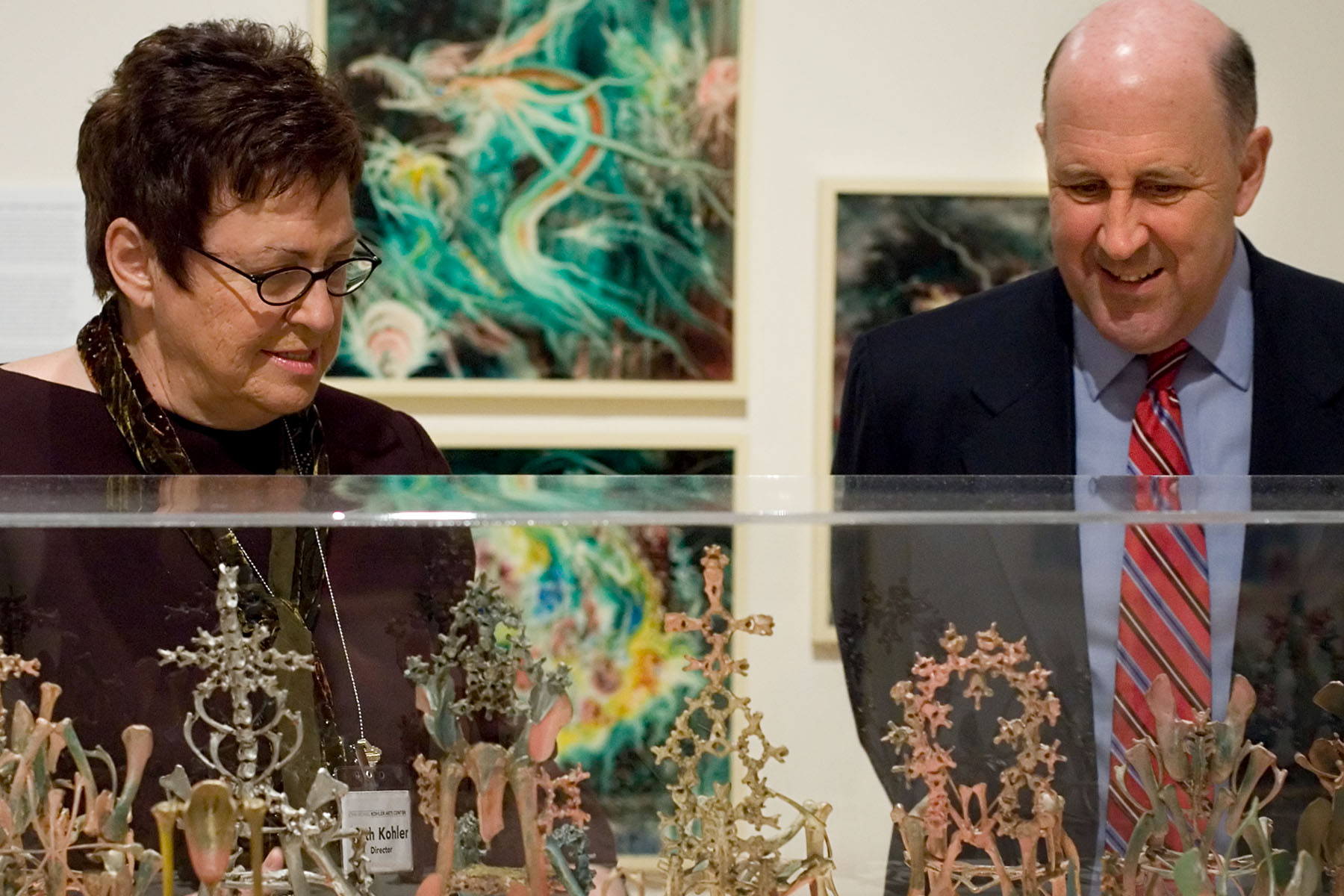Artist-Built Environments
Ruth Kohler fondly recalled childhood family excursions, saying that her favorite jaunts were those during which her father unexpectedly pulled into farmyards and urban driveways to contemplate elaborate bathtub shrines, communities of scarecrows, a forest of brightly painted windmills, and eccentric personal museums. “I realize now that those were my first taste of the art of environment builders,” she told an audience gathered at the John Michael Kohler Arts Center’s 2007 “The Road Less Traveled” conference.
When Ruth returned to Sheboygan following years at college, teaching in Beloit, and pursuing life as an artist abroad, she resumed those merry outings across the countryside. In 1967, Frank (Jake) Jacobson, a charismatic Arts Center board member and avowed explorer, took Ruth (then the assistant director of the Arts Center) on a trip to Fred Smith’s Wisconsin Concrete Park on the outskirts of Phillips, Wisconsin. “The first few minutes with Fred—and a glimpse of his concrete wagoner with cast-glass Red Crown gasoline ‘hat,’ his poignant Sacajawea, Mable the Milker with her not-so-compliant cow, and the curious concrete deer peering from behind trees and shrubs—transformed the way I thought about art,” Ruth recalled years later.
With her appointment to director of the Arts Center in 1972, Ruth broadened the organization’s focus to include the work of self-taught artists, particularly those who built environments. When elected chair of the Wisconsin Arts Board in 1974, the suggestion to preserve Smith’s park resonated as a project that would both meet the agency’s mission and bring visibility. With the support of state and federal agencies, the John Michael Kohler Arts Center, Kohler Foundation Inc., private businesses, and area residents, conservation was completed and the site was donated to Price County in 1978.
As director of the Arts Center and a member of the Kohler Foundation board of directors, Ruth was certain that an informal partnership of the two organizations would prove to be fruitful in preserving similar sites. The preservation of artist-built environments has been a focus of the Arts Center and Kohler Foundation ever since. Ruth was instrumental in providing the leadership and vision that has brought both to preeminent positions in those fields. Major restorations include: Nick Engelbert’s Grandview, Hollandale, Wisconsin; The Painted Forest, Valton, Wisconsin; Paul and Matilda Wegner Grotto, Cataract, Wisconsin; Pasaquan, Buena Vista, Georgia; Prairie Moon Sculpture Garden and Museum, Cochrane, Wisconsin; and Hartman Rock Garden, Springfield, Ohio. As a result of that partnership, the Arts Center holds two in situ environments in its collection: the James Tellen Woodland Sculpture Garden in Sheboygan, Wisconsin, and the Mary Nohl Lake Cottage in Fox Point, Wisconsin.
In 1983, Ruth was introduced to a site that was not salvageable in situ—the Milwaukee home of self-taught artist Eugene Von Bruenchenhein. At Ruth’s urging, the John Michael Kohler Arts Center board of directors took on an unusual collecting mission: the acquisition of interrelated components of art environments that could not be saved in situ. Since those first works by Von Bruenchenhein, the Arts Center’s collection has grown to nearly 13,000 objects by more than 30 environment builders. Among the artists represented are Levi Fisher Ames, Emery Blagdon, Loy Bowlin, David Butler, Nek Chand, Jesse Howard, Dr. Charles Smith, Gregory Van Maanen, and Stella Waitzkin.
Faced with increased interest in the work of art-environment builders and an expanding collection, in the early 2000s, Ruth began planning the Art Preserve—the first facility of its kind, dedicated to the study of the art form and the conservation, preservation, and presentation of the works. At the Art Preserve, she envisioned the Arts Center’s collection being safely housed and accessible to the public and researchers year-round.
In 2016, Ruth stepped away from the directorship to concentrate on making the Art Preserve a reality. In her new role as director of strategic initiatives, she worked with the board of directors, Arts Center staff, and Tres Birds of Denver, Colorado, in the design and completion of plans for the new facility. She eschewed traditional understandings of museum storage in favor of an approach that encouraged engaging with the works of art. It would truly fulfill her vision of art-environment builders being understood and experienced even when the works comprising an environment can no longer exist in their original settings.
With the acquisition of 38 acres on Sheboygan’s west side, construction began in 2018. On June 26, 2021, Ruth’s legacy will come to life and the John Michael Kohler Arts Center’s Art Preserve will welcome visitors to its grand opening.
